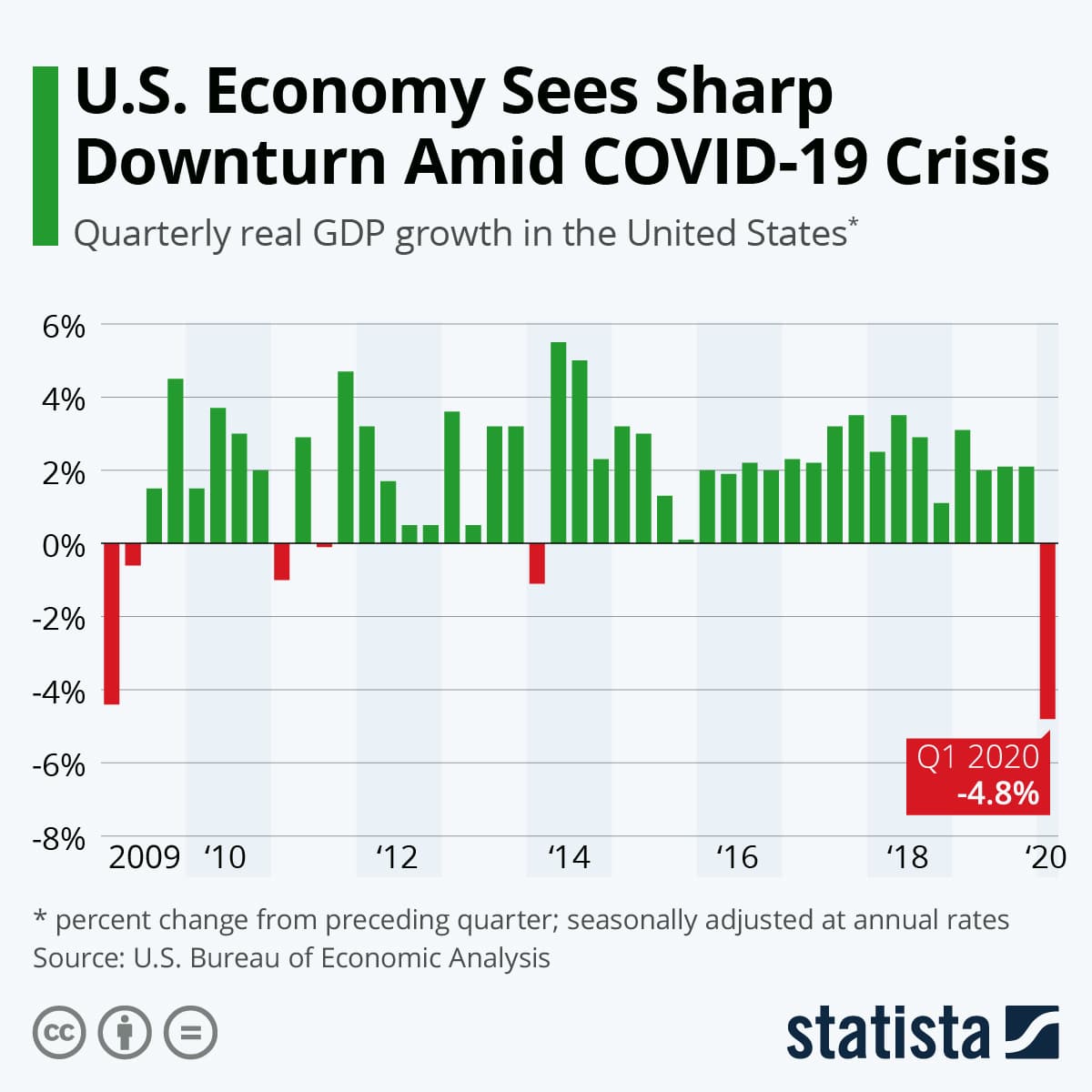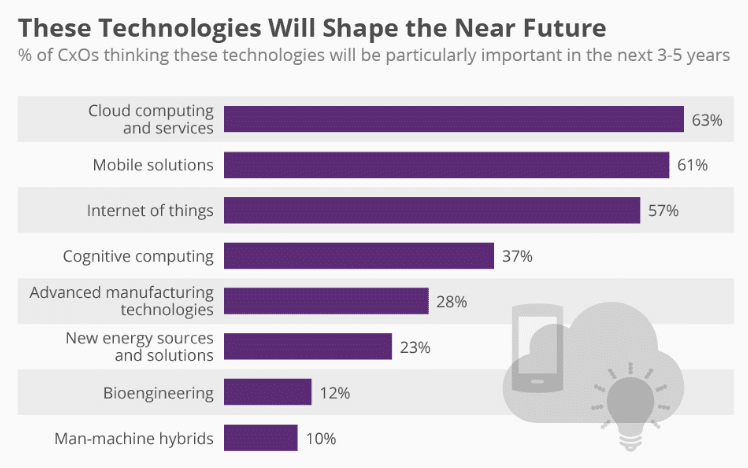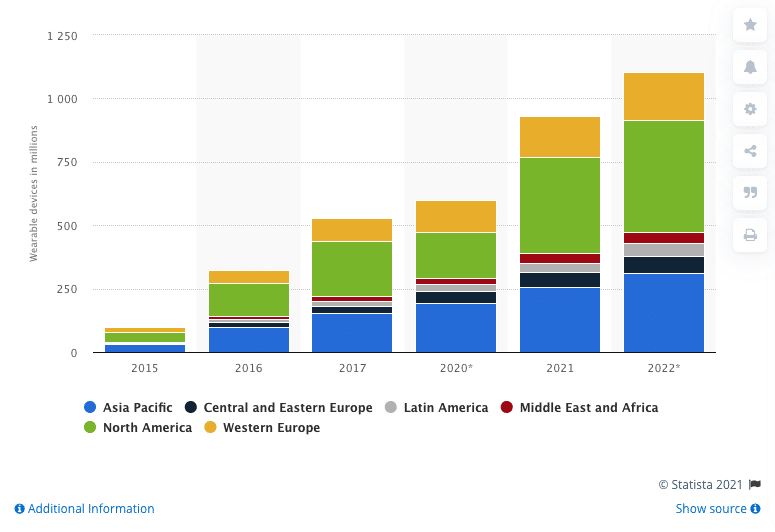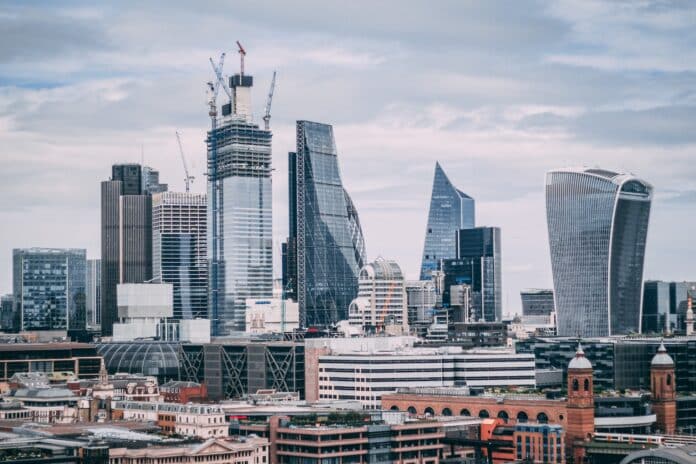London’s tech industry as a whole is booming beyond belief. The sector has shown relentlessness in its pursuit of innovation which has seen new sectors emerge and old ones transform, adopting a more contemporary way of working. The tech companies in London have, together, driven growth into the industry whilst creating jobs.
The pandemic has undoubtedly created rough terrain for the city. In efforts to bring it back up from its knees, the City of London is encouraging small business, specifically start-ups, to help the capital recover from the economic damages of Covid-19.

(Image indicates effects of the pandemic in U.S GDP growth in 2020. Source: The World Economic Forum)
A plan drawn up by the City of London Corporation will create start-up hubs and an increased number of affordable workplaces in London’s Square Mile for those smaller businesses that need the space to accelerate but do not have the capital to do so. The plan will help, more specifically, those companies that the pandemic has the most hard hit.
Square mile has been empty throughout the pandemic as work from home guidelines were introduced. Most businesses have started considering downsizing, which means decreasing their city headquarters, and others have given up on having any headquarter at all.
The plan also includes flexible working season tickets for rail travel. This is thought to help reflect new consumer behaviour, accommodating for working from home. The project also focuses on buildings. Many buildings in London are old and grade listed, in dire need of a revamp.
A clear focus on buildings will ensure that future buildings will be constructed and designed to accommodate remote working practices and create space for socialising and meeting, supporting surrounding businesses.
The city regeneration will focus on offering an ecosystem tech-hub that will support high-growth tech-led businesses, allowing them to work with the private sector. It will help to provide advice and digital skills to help accelerate their business and the space they need to do it.
The Square mile broadband will be upgraded to offer 5G connectivity thought and include a scheme to help connect start-up with city capital in joined-up thinking. The City Corporation will also provide tech-driven business and complete access to their data.
This data includes metrics such as consumer behaviours and travel data recording how the streets of London are used. This information will enable tech businesses to create pilot driven solutions to problems.
The regeneration of Square mile will also create 1,500 new homes from unwanted office space by 2030, which will encourage people to move into the area, offering cheap rent. But what types of innovation could we see come out of the technology hubs?
Future Tech
The ideas and concept of today turn into our tomorrow. For this reason, it’s essential to be able to give tech the space and investment it needs to grow. London will have to reinvent itself to maintain its position as a leading business district. With a focus on the future, here’s a look at some of the different types of technology we could see coming out of the tech-hub

(Based on interviews with 5,247 c-level executives from 70 countries IBM Security. Source: Statista)
Greener technology
Efforts to increase environmental awareness continue to grow. The pandemic has painted a clear picture of how detrimental humans are to the plant. Since the lockdown implementations, the natural world has flourished.
With this in mind, Air Force Officer Scientific Research teams have developed a TEG, which is typically made of inorganic semiconductors that can be wrapped around any hot water pipe to generate electricity from wasted heat. These generators can be used to power light sources or even wireless sensor networks that help monitor the environment.
Wearables
Throughout the pandemic, wearables have boomed. As many become more health-conscious, there’s no doubt that we will begin to see more of them.
As AR and VR technology becomes more accessible and affordable, we will see intelligent wearables in all industries, especially when it comes to eyewear. The biggest selection of wearables, especially smart glasses, is set to change the landscape for manufacturing and healthcare with the help of AR. Regular glasses frames could soon be fit in with smart lenses that have the potential to replace traditional gadgets like smartphones and watches.

(Source: Statista)
Using computer-generated images overlaid on real-life objects will give medical professionals like surgeons the accuracy they need and production lines the insight they need.
IoT
The IoT looks promising as it will help people reach a faster pace of life. A recent study has concluded that by 2025 the market for IoT app solutions will grow at an annual growth rate of 28.7%. A report from Statista has also indicated that over 75 billion devices will be connected with IoT making it an integral part of our everyday lives.
There is no doubt that the future is smart. As we look back on the past, technology has completely transformed and revolutionised the world as we know it today, speaking volumes for what it can do for our future.
PLEASE SUPPORT US FOR JUST £2 A MONTH







